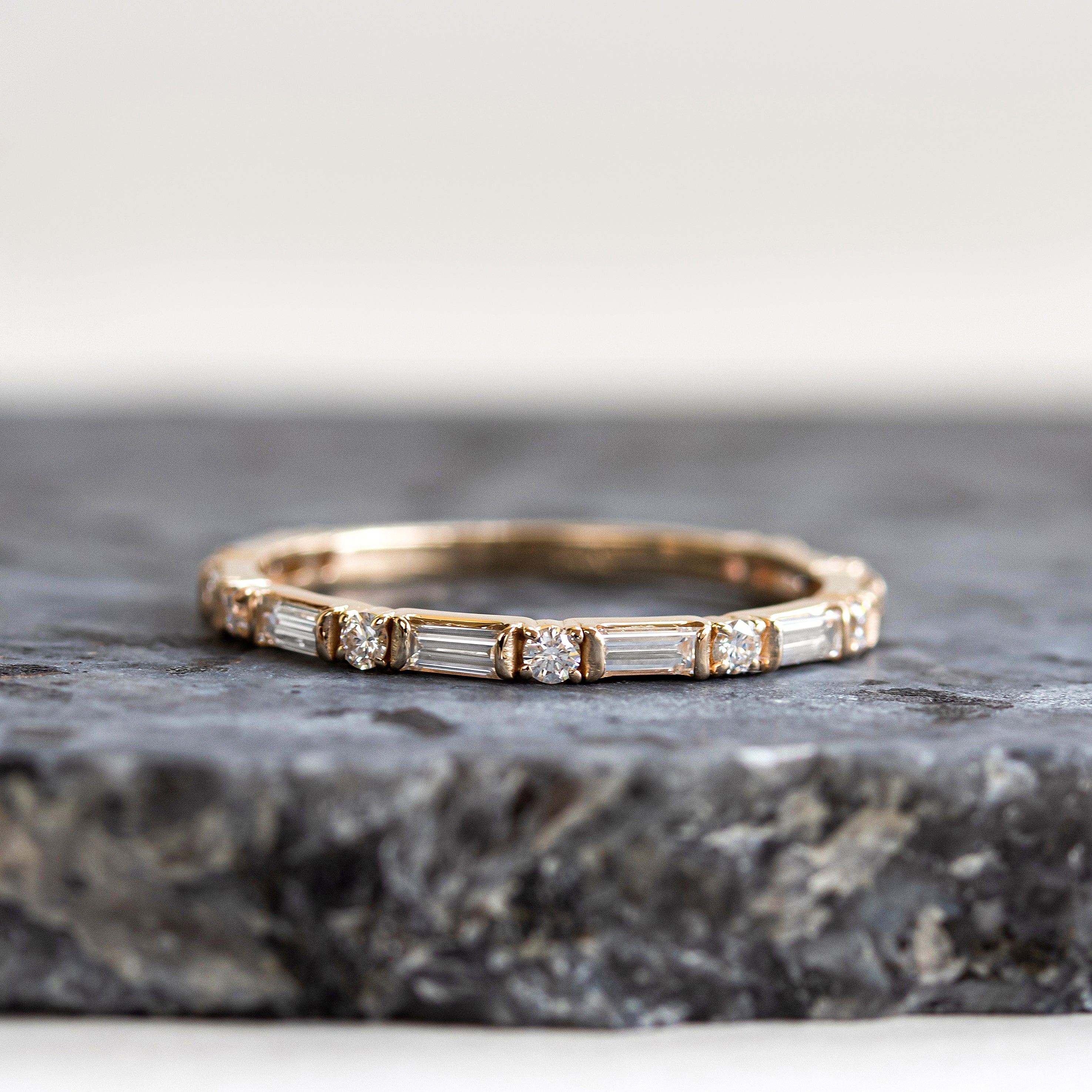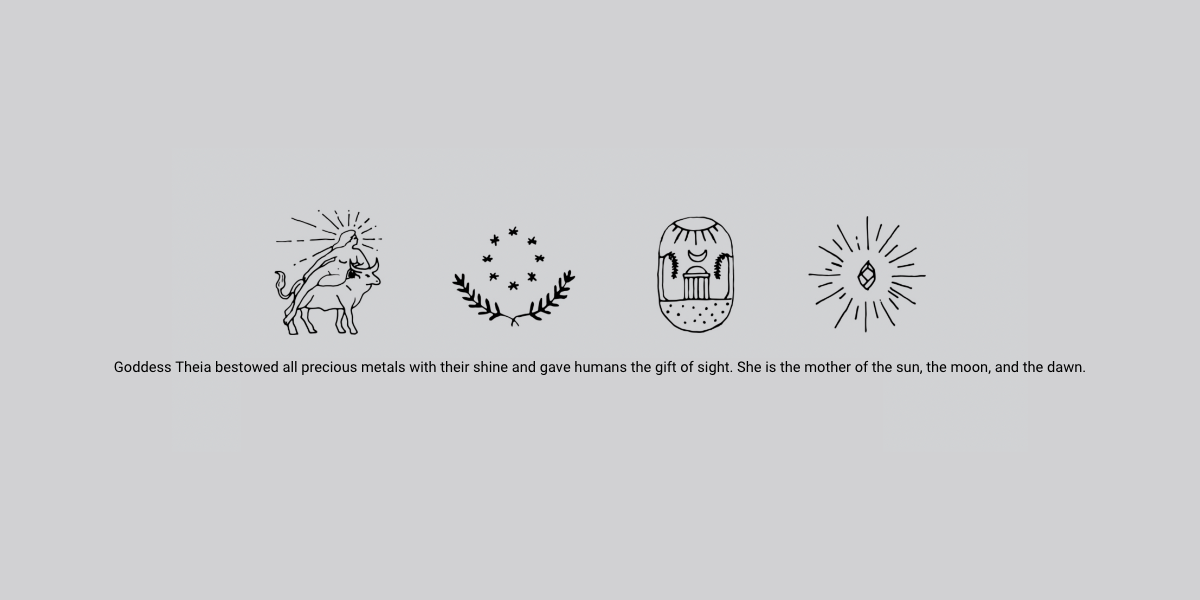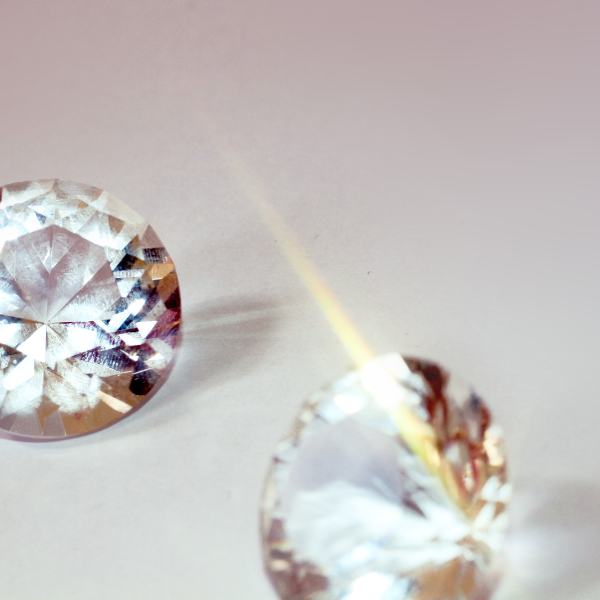ETHICS & SUSTAINABILITY

GREENWASHING & THE JEWELRY INDUSTRY
We’re actually thrilled to hear so many clients asking about ethical jewelry! It is encouraging to hear these questions asked on a daily basis, and it marks an important shift in consumer behavior. People really do care about the impact their choices are making, and we’re here for it!
One downside is that we hear these words thrown around so much that they start to lose meaning. Everywhere you look these days, you will see jewelry brands claiming to be ethical and sustainable. As a conscious consumer who cares about the impact of their purchases, it can all be a bit overwhelming. What do brands mean when they say something is ethical? And how can you be certain that it’s not greenwashing? What are the best jewelry choices for the environment?
Before we go any further, it’s important to clarify these terms.
At Altana, we use “ethical” to describe stones and jewelry as pieces that consider their impact on the people involved at every step of the process. What are their working conditions like? Is their health & safety taken into account? Are they paid fairly for their work? Does the work help lift people out of poverty and offer access to marginalized groups?
And we use “sustainable” to refer to materials and procedures that are better for the environment. Here, the word better is important. There is simply no way around the fact that buying jewelry has an environmental, political, and social impact. Consumption always does, whether it’s the food you purchase at a farmer’s market, a book you buy online, or the car you drive.
So, if you hear us using the terms “ethical and sustainable”, we are talking about taking an honest look at all the steps in the jewelry supply chain, from mining to refining to sourcing to fabrication to our own storefront. We are doing our best to honor all of the people involved along the way, and to make sure that the jewelry is made with a minimal impact on the environment.
THE UGLY HISTORY OF THE JEWELRY WORLD
Unlike the beautiful gems we all know and love, the history of the jewelry industry obviously isn’t pretty or shiny. For centuries, jewelry companies and colonial powers exploited and enslaved people. Even today after much reform, some mines still employ forced labor and children. Others are extremely dangerous or detrimental to the workers’ health. Now two decades after the signing of the Kimberley Process, a certification designed to eliminate the mining and exporting of “blood diamonds”, we are still seeing human rights violations in diamond mining countries. There are loopholes in the process that many advocates argue means that the process has little impact.
Environmentally speaking, the jewelry industry has ravaged ecosystems all over the world. Silver and gold are elements in the earth’s crust, and accessing most large deposits requires open pit mining or underground mining. Diamonds are typically found very deep in the earth. For context, they are generally found deeper than the height of the Empire State Building. Obviously, moving this amount of soil has drastic impacts on the environment. Some pit mines are actually big enough to see from space. Mining in this way creates wide ranging environmental problems from deforestation to the pollution of waterways and destruction of animal habitats and ecosystems. Irresponsible mine owners will sometimes leave open pit mines when they are no longer economically viable instead of filling them.
WHAT STONES ARE SUSTAINABLE?
You might have heard that lab-created diamonds are a better ethical choice than natural diamonds. Personally, we don’t feel that is always true. There are lots of considerations. For a deep dive on the ethics and sustainability involved in choosing synthetic and natural diamonds, check out our blog post linked below.
If you know you are looking for a diamond, for us, the heart of this question is about how you source the stone. And lucky for you, we have spent years and years developing relationships with people we trust in the diamond industry. We now have go to dealers that can source diamonds in exactly the parameters clients request. Many of these dealers specialize in post-consumer diamonds (meaning that the diamonds have been recovered from pieces of jewelry or previously owned). Some of our other diamond dealers work closely with their suppliers and have a clear picture of their supply chain, allowing for more transparency than we can get as jewelry makers and consumers. And all of these suppliers that we use are men and women who are dedicated to making the diamond industry better.
And we work with an incredible company creating synthetic diamonds. They are truly an example of responsible business practices. They create their diamonds using renewable power. They have a diverse work force and employ many artists in their community. They are located right here in the United States. They offer fair and transparent pricing. They care about their community and the environment. It’s a pleasure doing business with them. Using this company to source our lab-created diamonds means you can write off many of the environmental concerns that can come with synthetic diamonds and feel good about your jewelry.
Sapphires can also be a good option for those concerned with ethics & sustainability. Generally, sapphires are found closer to the earth’s surface and require less displacement of soil and ecosystems. Smaller mining systems mean that artisanal miners can make more money for their efforts under better working conditions, and the sapphires are easier to trace than diamonds which normally come from large-scale mines. With sapphires, our dealers can offer mine to market stones, which means you can trace every single step the stone has taken from being mined to ending up in your ring. This allows us to know that all of the people involved along the way were paid fairly and treated well.
As in all environmental issues, the most sustainable option is the one you already have. If you are lucky enough to have heirloom jewelry in your family, reusing the gemstones and metal is a fabulous option. At Altana, many of our custom pieces have been made for clients by recycling elements of jewelry they already had. Remaking a piece of jewelry ensures that your piece is far more sustainable, just by extending the life of an already existing piece.
When it comes to your gemstone choice, we will never sit you down and tell you what the most sustainable and ethical choice is. Instead, we will listen to your concerns, help you flesh out what’s most important to you, and then give you the information you need to make the best possible decision for you. And, of course, we will involve you in every step of the hunt for the perfect gemstone once you’ve made your choice, so that you can feel truly informed when it comes to the provenance of your jewelry.
WHAT DOES OUR PERSONAL COMMITMENT TO ETHICS & SUSTAINABILITY LOOK LIKE AT ALTANA?
-We use recycled and fair-mined metals whenever we can.
-We work exclusively with conflict-free Kimberley Process natural diamonds as a bare minimum standard, and often use post-consumer diamonds or heirloom diamonds. We buy mined diamonds only from suppliers we have longstanding relationships with and whom we know to be trustworthy individuals invested in improving living and environmental standards for miners and the diamond industry in general.
-We buy our lab-created diamonds from a company with the highest commitment to strong environmental principles and excellent workplace standards.
-We have deep and long standing relationships with our gemstone vendors, choosing to work only with those people that are also committed to ethically sourcing their gems.
-We consider our own footprint on the environment, both in the jewelry studio and the store. This commitment extends all the way from our minimal packaging to the protections our workers use when making jewelry to the types of products we buy.
-We pay fairly. We pay fairly when other artisans work on our pieces of jewelry. We pay our workers fairly. We work only with suppliers who pay fairly as well.
-We design our pieces carefully with the intention that our jewelry will last a lifetime and then still be able to be handed to the next generation.
-We are deeply committed to keep learning and keep changing as new materials and new sources emerge. Sustainability is something that is a foundation of our business and something that we return to, again and again.
WHAT ELSE CAN I DO TO REDUCE MY IMPACT WHEN BUYING JEWELRY?
- Big name companies and jewelry stores have made obscene profits from mining without considering the environmental or human costs for decades and decades. They are not going to change without consumer demand. Be vocal when talking with stores and managers about what you’re looking for, and tell them you will take your business elsewhere if you don’t see change.
- Skip fast fashion jewelry. Fast fashion items are designed to break so they will need to be replaced, creating a cycle of waste. The items are often priced so low that the workers involved in the supply and shipping chain simply cannot be paid fairly.
- Instead, buy high quality pieces that will last so that they can be worn time and time again or passed on to someone else when they no longer work in your own wardrobe.
- Buy second hand jewelry. There are so many great options now for finding amazing second hand jewelry. If you’re on Instagram, try some of our favorites to start: @gemgossip, @erstwhile, & @trumpetandhorn
- Be wary of anyone that claims their jewelry is “ethical & sustainable” without any proof to back it up. Ask them how they define those terms and how they ensure their work lives up to the definitions.
- Work with an honest jeweler who shares your values and morals. Those of us who care in the industry have a network of trusted sources for stones and materials sourced under best practices.
- Know what questions to ask. When buying a piece of jewelry, ask your jeweler if the stone can be traced and what they know about the mine and miners who found the stone as well as the people who refined the stone. Ask your jeweler about their gemstone dealers and how they work. Ask your jeweler how the ring is fabricated and what environmental considerations are in place to protect the health of the workers and the environment.


